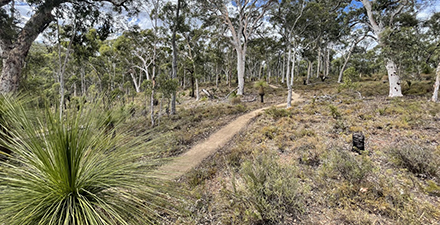International Day of Forests 2024 marks the importance our forests hold for the future of innovation, climate change, and essentially, the ability to live in a better world. Source: Timberbiz
Australian Forest Products Association Chief Executive Officer, Diana Hallam said this year’s theme – Forests and Innovation: New Solutions for a Better World – highlighted one of the exciting opportunities for forestry and forest products in Australia – utilising research, innovation and technological change to maximise the value from our forest resources, including counting the value of stored carbon in trees and forestry products.
“Just last week, the new National Institute for Forest Products Innovation – known as Australian Forest and Wood Innovations (AFWI) – was launched in Launceston, Tasmania. AFWI will boost Australia’s research and innovation capabilities for our industry and help match us with other leading forestry and forest product nations,” she said.
Ms Hallam said that innovation across the sector would help better realise the value of our assets and encourage decision makers to recognise the significance of trees and wood and fibre products to help the Federal Government meet Australia’s emission reduction targets.
“Innovation is at the heart of South Australia’s forest industries, and with today’s International Day of Forests theme being Forests and Innovation: New Solutions for a Better World, it provides a perfect opportunity to celebrate the ground-breaking work South Australia’s forest and timber industries are achieving,” Mr Nathan Paine, Chief Executive Officer of the South Australian Forest Products Association said.
In the last month alone, three forestry businesses in the Green Triangle have shown how innovation, investment and new technologies are shaping a stronger and more efficient forestry industry for the next generation.
“Businesses like Fennell Forestry are already leading the industry by example by decarbonizing the industry one log truck at a time. With transport as Australia’s second highest contributor to carbon emissions, in 2023 Fennell Forestry converted their single diesel-powered log truck to an electric and battery system, slashing the truck’s carbon footprint to zero,” said Mr Paine.
“Then we have Timberlink Australia who officially opened Australia’s first Radiata-Pine Cross Laminated Timber and Glue-Laminated Timber manufacturing facility which produces carbon neutral mass timber products for residential and commercial construction, and lastly, OneFortyOne who unveiled their $8million nursery redevelopment today, which is a new state of the art undercover handling system which increases productivity and workplace safety.
“From seedlings to structural products, South Australia’s forest industries have their fingers on the pulse of innovation and are making significant progress in major value-adding into future commodities, such as biofuels and carbon farming,” he said.
“Our industry is only going from strength to strength, particularly with the recent State Government announcement of the South Australian Wood Fibre and Timber Industry Master Plan – a plan and vision that is set to further grow and develop South Australia’s multiple billion-dollar forest and timber industry.
“Forestry and innovative practices are the key to new solutions and a better world, and we are achieving that right here in South Australia,” Mr Paine said.
Victorian Forest Products Association CEO Deb Kerr said that this year’s International Day of Forests celebrates the role of trees in providing powerful solutions for a better world. From cutting-edge drone and satellite technology for forest monitoring to sustainable substitutes derived from trees for plastics, building materials and fabrics, innovation can help us.
“Our plantations are carbon sinks and the wood products we produce are also a source of carbon sink for their lifetime that also provide the fibre that is integral to our society – from our homes to providing the cardboard and pallets underpinning Australia’s logistics and supply chains,” she said.
“Today a new evolution of innovation and technology is leading to a range of renewable solutions and a range of new applications for wood fibre as the solutions to today ’s challenges to decarbonise.
“Wood is being used to make satellites and wood turbines, wood fibre is being 3D printed into new homes and to make bioplastics that are replacing plastic packaging and used for defence purposes such as Melbourne based SYPAQ Systems’ cardboard Corvo drones.”
Wood cellulose was being revolutionised into glass-like transparent wood that had applications such as for mobile phones, light fixtures to colour changing windows.
“It is stronger, and a better insulator, than glass,” Ms Kerr said.
“While traditional wood fibre uses will always be the cornerstone of our industry, we are also on the cusp of a new revolution in wood fibre replacing non-renewables,” she said.
Engineered Wood Products Association of Australasia Chief Executive Officer Gavin Matthew said that given the world’s ongoing challenges such as war, logistic constraints, housing shortages, living cost increases, and extreme weather events, this year’s International Day of Forests theme – Forests and Innovation: New Solutions for a Better World – was both important and timely.
“Sustainably managed forests produce an increasing range of innovative and renewable wood products (including many new engineered wood product solutions), that store carbon, reduce emissions, inspire designers, build new homes and businesses, and are used in many other essential and surprising applications around the world,” he said.
“Investing in sustainably managed forests, forest plantations and our renewable wood product industries provides many social, economic, and environmental benefits. It is important that policy makers across the world recognise and incentivise the significant potential of using renewable and low emission wood product solutions in the built environment, to provide essential shelter, store carbon long-term, and cut emissions,” Mr Matthew said.






